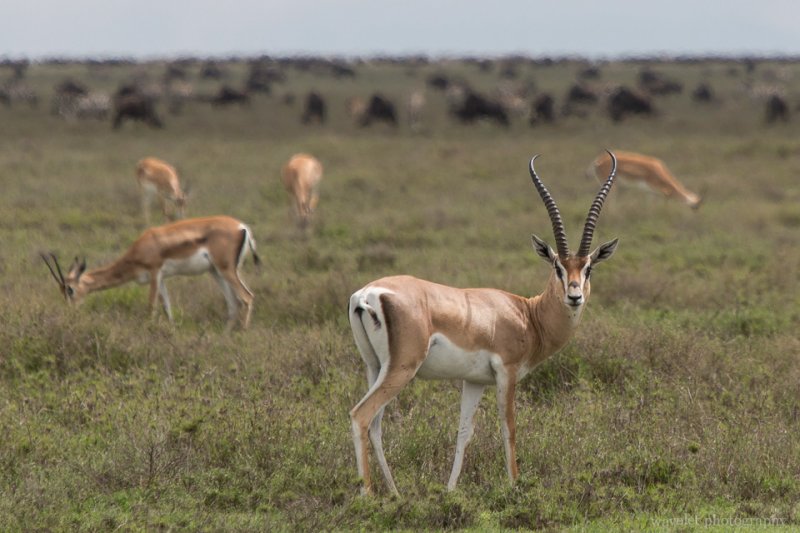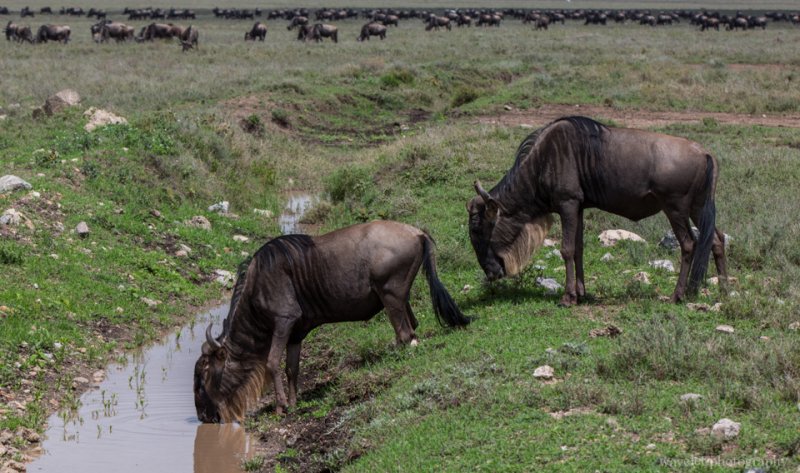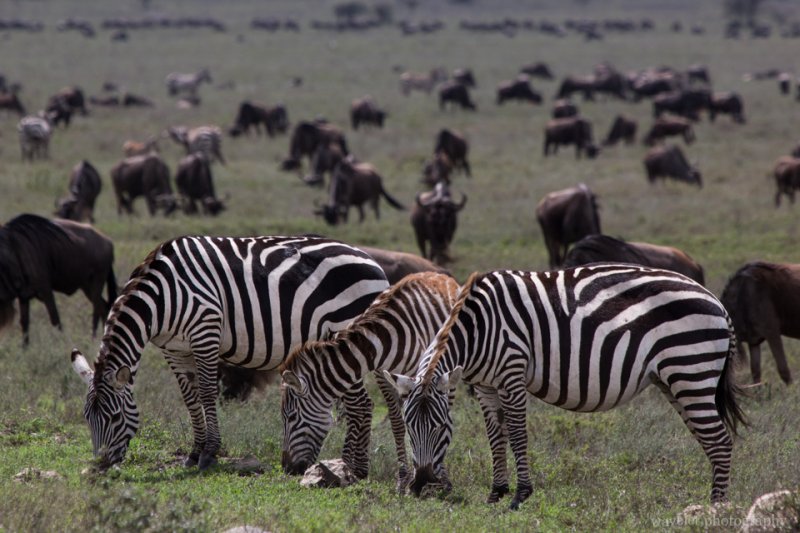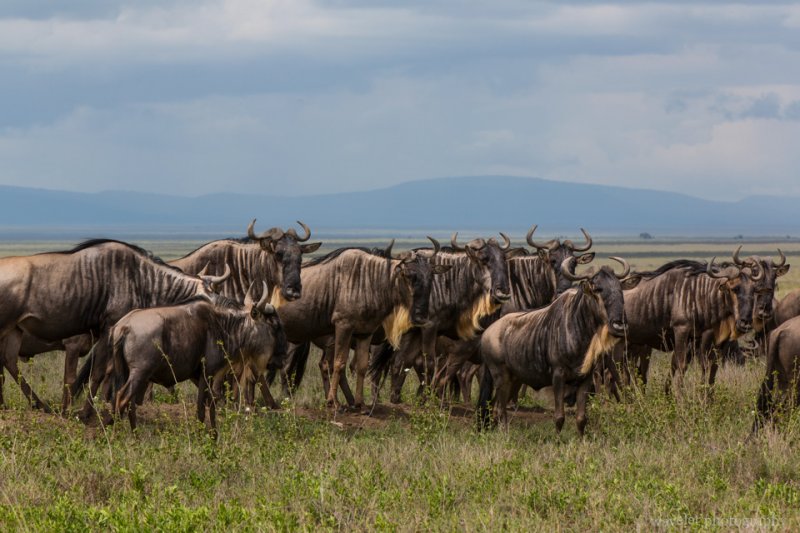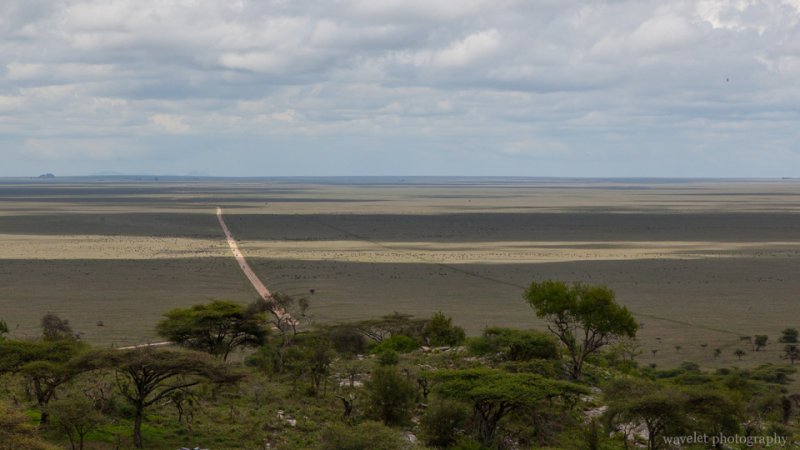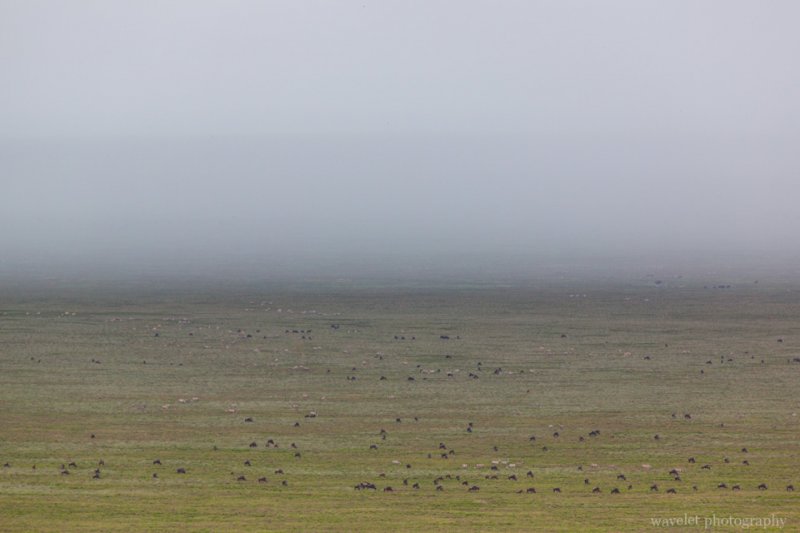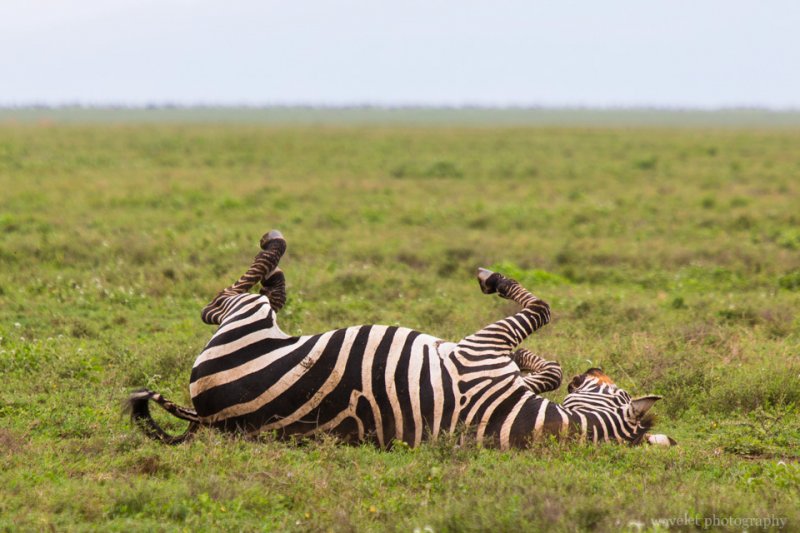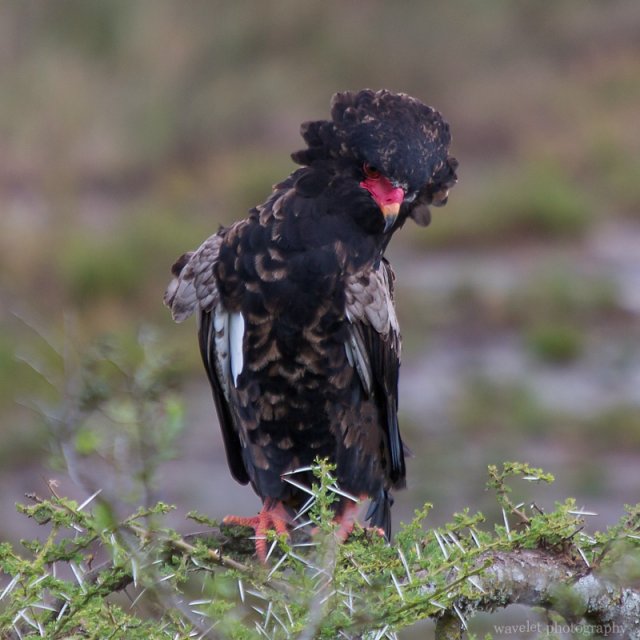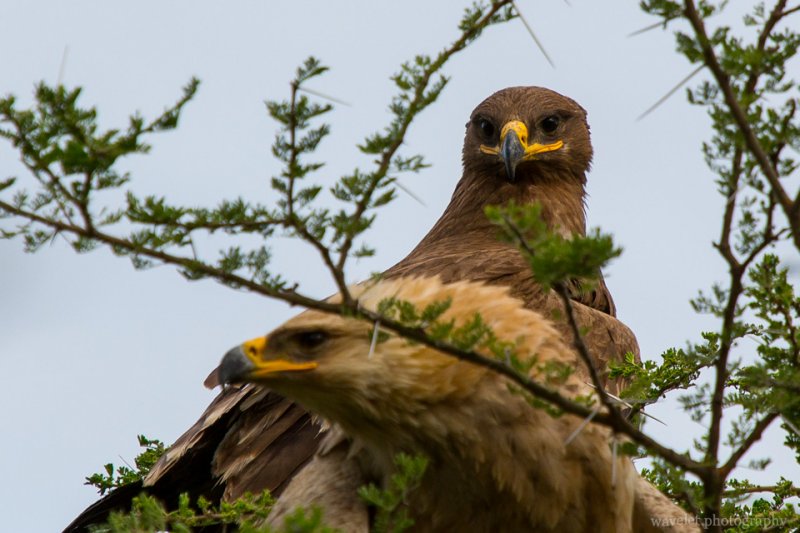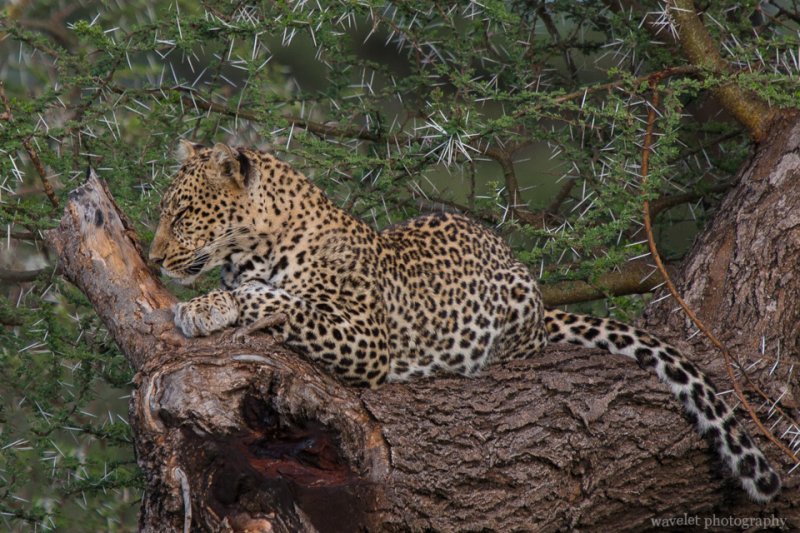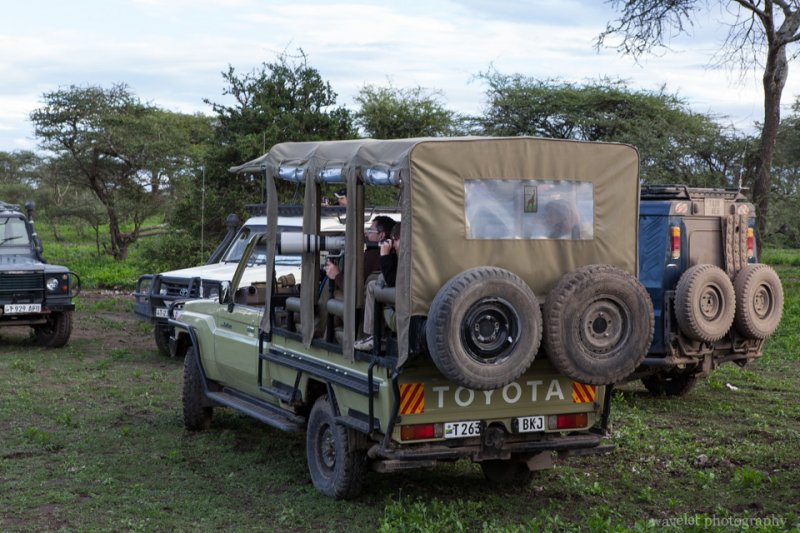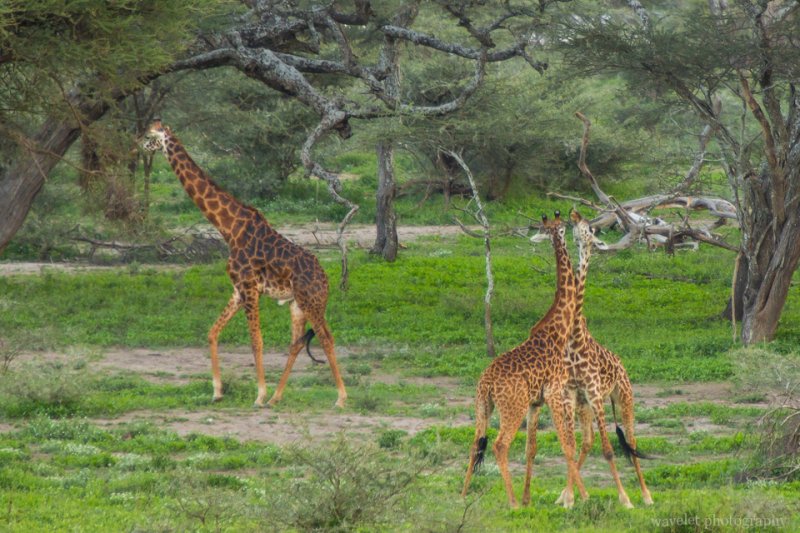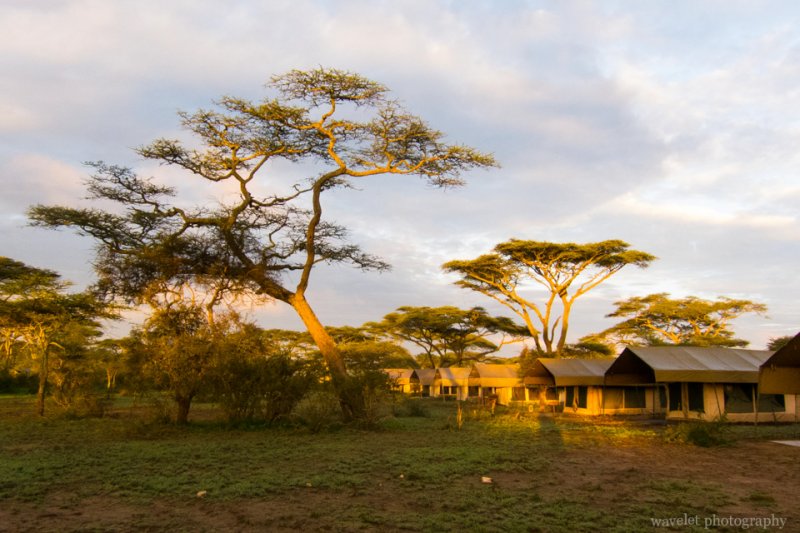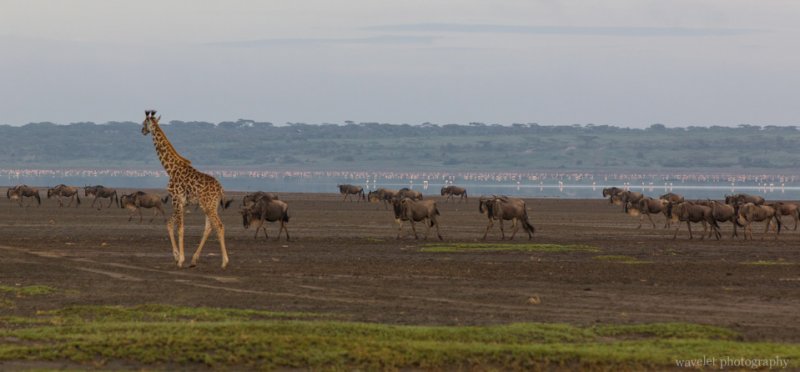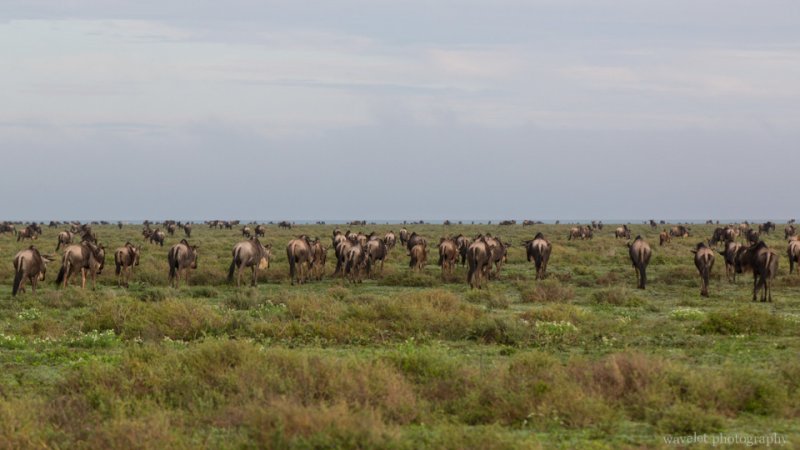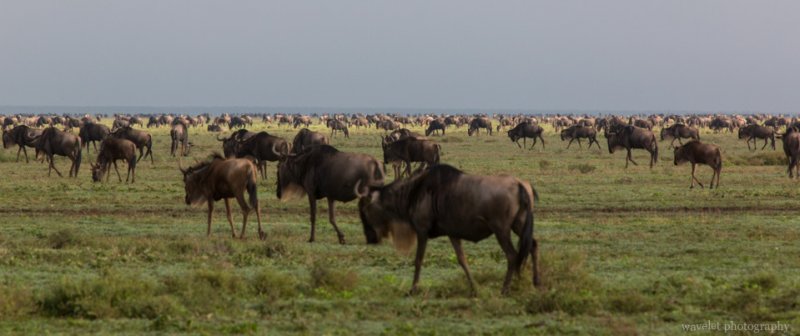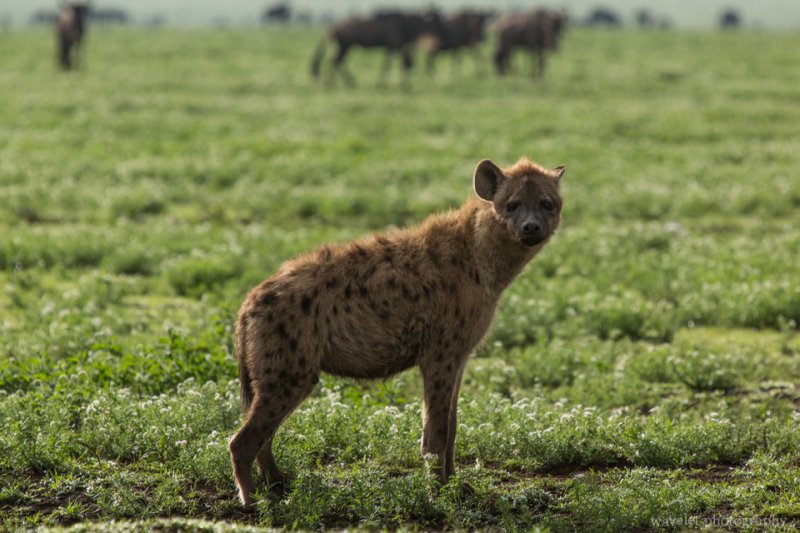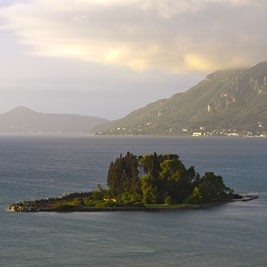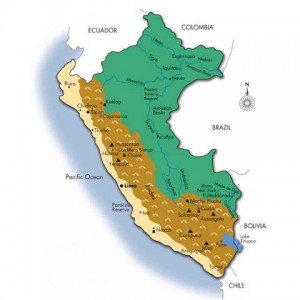2012.12.30~31The road run straightly towards southeast as we were driving to Naabi Gate. Wildebeests and zebras spread on both sides of the road as far as the eye could see. We were in the middle of Serengeti’s great migration.
The migration is the yearly movement of as many as 1.5 million wildebeests around Serengeti plains, covering more than 1000 miles. Large numbers of other animals, especially zebras, gazelles and impalas travel with them. Driven by where the rain and fresh grazing is, the annual pattern of the movement is largely predictable. At the end of the year, the herds primarily gathered at the short-grass land of Southern Serengeti, Ndutu and part of Ngorongoro Conservation Area.
We arrived at Naabi Gate at 12 pm and we climbed to the top of the Naabi Hill again. Two days ago, nothing could be seen on the Southern Serengeti plain, now animals in migration were all over around us.
The early afternoon storm approached us from the east. We returned to the car, had our lunch while waiting for the rain to move over us.
Not very far after passing Naabi Gate, we went off the road to the south. Because we booked our trip too late, no hotel on the rim of Ngorongoro Crater could be found. We would stay overnight at Lake Ndutu area. The storm left a mess on the grass plain. Justin had to drive carefully to not to get stuck in the mud puddles.
After an hour and a half, the short grass plains gave away to the woodlands. In fact, Ndutu area is a primary location for wildlife watching during migration, not only because of the lake as the water source, but also the woodlands keep wildebeests and zebras safe from their predators. During January and February, about quarter of wildebeests (300K to 400K) give birth within a short window of two or three weeks. Although this synchronized birthing seems to be a feast for predators, actually they are quickly becoming satiated so that eventually more calves survive.
It took us some time to find our camp, Ang’ata Migration Camp. The camp sits on the high land of the rolling savanna overlooking Lake Ndutu. At check-in, the staff told us that the waste is first processed by chemicals in the bucket in tent’s restroom, then “after you’ve done your business, we will take your business to the business center and they will be buried underground”. It’s a quite humorous way to explain an unpleasant fact.
After some rest, we went out for a game drive around the region. Lake Ndutu is a good place for bird watching.
We carefully tried to avoid crossing the lakebed because it’s too muddy until Justin got calls from other guides reporting that they saw a leopard on the other side. As we arrived to the spot, there were already 5 or 6 cars. It seems to be a baby leopard, but we were able to get quite close only about 30~40 feet.
On our way returning to the camp, we saw two giraffes fighting as others passed by. The two literally threw their necks to each other, collided and tangled together. It’s hard to imagine that the animal so elegant whose fight can be so brutal. What we saw was just a gentle skirmish.
We had a nice dinner with fried tilapia. When they were introduced into China, it’s called “Africa Carp“, but we didn’t know that they indeed came from Africa.
The second day morning, we left the camp at 7 am. Ang’ata Camp is located in the middle of the woodland, we have seen giraffes and elephants very close to the tents. Justin said that we had just been visited by a lion in the morning. It seemed that animals were moving into the area.
As we returned to the short-grass plains, we were surrounded by thousands of thousands of wildebeests. No obvious leaders, they were all walking towards the Lake Ndutu direction, seemingly knowing there would be fresh grazing waiting for them. Indeed, clouds had been gathering over the southern sky. The wildebeests just know the rain is coming. They have done this for millions of years.
We returned to the main road, B144. Our last stop was Ngorongoro Crater.

